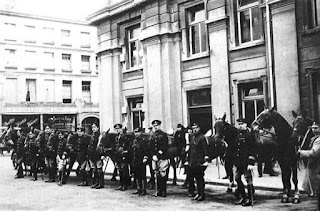Today’s news that trade union membership in the UK is inching upwards (an increase of 1.4% or 91,000 to 6.44 million) is hardly grounds for (even a socially distanced) party to celebrate – but it does tell us something about the resilience of our movement.
To quote further from the official bulletin; “Trade union membership levels among employees have now risen for three consecutive years following the fall to a low of 6.23 million in 2016.”
Trade union density (the proportion of UK employees who were trade union members) “also rose slightly to 23.5% in 2019 up from 23.4% a year earlier, and from the low of 23.3% in 2017.” This does of course mean that for every union member there are more than three non-members at work across the economy as a whole – and plenty of room for further growth.
The union movement is increasingly feminised; “The rise in trade union numbers among employees was driven by the increase in female members, up 170,000 on the year to 3.69 million in 2019.” (which implies that the total number of male union members fell by 79,000). Whereas in the twentieth century there were more male than female trade unionists, since about the turn of the century women have outnumbered men in our unions.
Other features of trade union members which have been reported on previously remain true. Black workers are more likely to be trade unionists than their white counterparts (which may reflect the relative concentration of Black workers in more highly unionised sectors). Trade union members are older on average than all workers, and those who have long continuous service with one employer are more likely to be unionised.
The trade union movement continues to based largely in the public sector; “The overall proportion of employees who are members of trade unions is significantly higher in the public sector relative to the private sector. 13.3% of private sector employees belonged to a trade union, compared to 52.3% of public sector employees, in 2019.”
Public sector trade unionism is continuing the modest year on year recovery which began last year, following a substantial fall in membership associated with Tory austerity policies between 2010 and 2017. However, as with the period before 2010 the increase in public sector union membership is associated (and failing to keep pace) with rising employment in the sector, so union density actually fell slightly in the public sector over the last year.
Overall the statistics suggest that our trade union movement is treading water rather than making real progress – but that is of course better than drowning. Having spent fourteen years on the UNISON NEC Development and Organisation Committee from 2003 to 2017 I am familiar with the challenge of high turnover of union members (as the UNISON NEC reported to Conference last year, recruiting nearly 170,000 members in 2018 hadn’t been enough to prevent a decrease in overall membership).
As our union movement faces the twin challenges of the “return to work” after the partial lockdown and the coming recession, the movement is hardly in robust good health, but nor is it in intensive care. Now would be a good time for a serious debate about the future direction of our trade unions.
It would be good to think that such a serious debate might arise as a result of forthcoming General Secretary elections in both UNISON and GMB.
But that would be a triumph of hope over experience.
